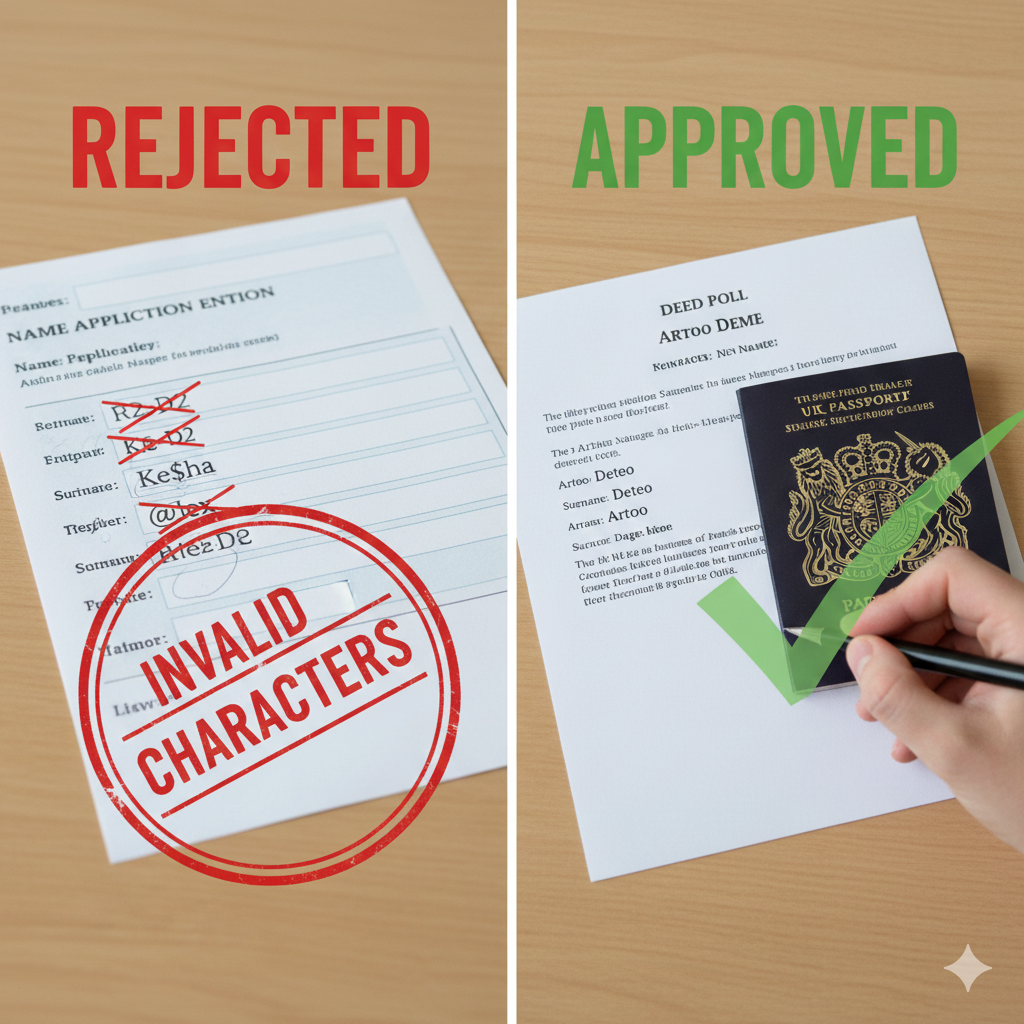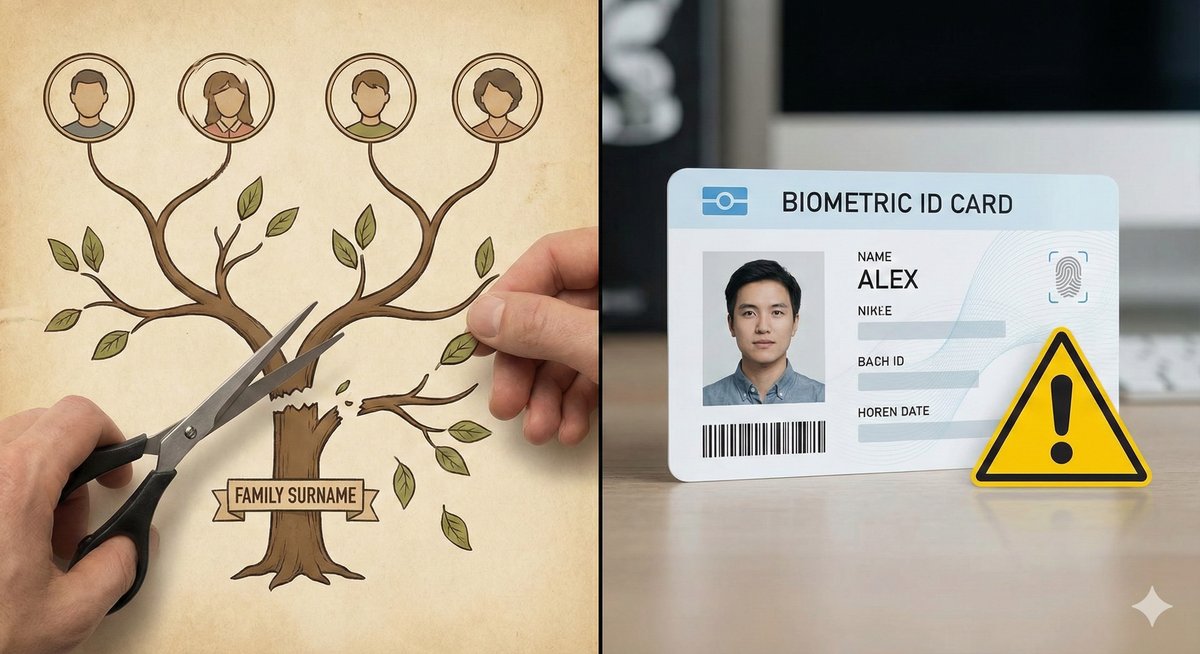Can You Change Your Name Back to Your Original Name in the UK?
So you’ve changed your name before, and now you’re thinking about going back to your original one. Maybe a marriage ended, a name just didn’t feel right, or you’re looking to simplify things. Whatever the reason, the good news is that yes, you can legally revert to your original name in the UK.
It’s not complicated, but it does come with a few steps and paperwork to make sure your new-old name is recognised everywhere it matters — passports, bank accounts, driving licences, and more. Getting it right the first time saves a lot of stress later.
In this guide, we’ll cover the legal basics of reverting your name, how to do it with a deed poll, the practical reasons people go back to their original name, and tips for updating all your important records smoothly.
The Legal Basics of Reverting Your Name
Legally, there’s nothing stopping you from going back to your original name. In the UK, adults can change their name as often as they like — and that includes reverting to a previous one. Each change just needs to follow the proper legal steps, usually through a deed poll.
For children, it’s a little more involved. Anyone with parental responsibility must agree to the change, and if they don’t, the situation may need to go through the courts. That’s why it’s important to get consent sorted before you start the paperwork — it avoids unnecessary delays.
It’s also worth noting that while the law is flexible, official organisations will want to see valid, clear documentation for each change. Passports, driving licences, and banks all like a tidy paper trail. As long as you have that in place, reverting your name is straightforward.
Using a Deed Poll to Revert Your Name
The easiest way to officially go back to your original name is with a deed poll. Even if you’ve used one before, you’ll need a new deed poll for each change — including a revert. Think of it as a fresh legal stamp saying, “Yes, this is my name again.”
There are two main types:
- Unenrolled deed poll — simple, legally valid, and recognised by most organisations including banks, schools, and the passport office.
- Enrolled deed poll — officially recorded in court for extra recognition, but not usually required.
The key is to make sure the deed poll is completed correctly, signed properly, and witnessed. Skipping steps or reusing an old form can cause delays or rejection. Keeping a copy of your previous deed poll can also be helpful, especially if organisations ask for proof of your previous names.
With the right approach, a deed poll makes reverting your name straightforward and legally sound.
Practical Reasons People Revert to Their Original Name
There are plenty of reasons someone might want to go back to their original name, and most of them make perfect sense once you think about it:
- Divorce or separation: After a marriage ends, many people prefer to return to the name they had before.
- Personal preference: Maybe your previous change just didn’t feel like “you,” or you simply want to simplify things.
- Professional reasons: Some people revert to their original name to keep their career records consistent, especially if clients or employers know them by that name.
- Mistakes or regret: Sometimes a name change was rushed, or you just realised the old name works better in your day-to-day life.
Whatever your reason, it’s completely normal. The process is the same for each change — a proper deed poll, correct paperwork, and updating your important records. Knowing why you’re reverting can also help you explain it if any organisation asks.
Updating Your Records After Reverting
Changing your name back to your original one is only part of the process — you also need to make sure every important record reflects your new-old name. Otherwise, you can run into confusion or delays later on.
Start with the big ones: your passport, driving licence, and bank accounts. These are the places that matter most for identification and day-to-day life. Don’t forget your GP, employer, and any official memberships or subscriptions you might have — it’s easier to get them updated sooner rather than later.
It helps to make a checklist before you start so nothing gets missed. Keep copies of your old and new deed polls handy in case anyone asks for proof of the change. A little organisation here saves a lot of headaches down the line.
Updating your records might feel like a bit of admin, but once it’s done, you’ll be back to using your original name without any complications.
Using Our Service to Make Reverting Your Name Easier
Going back to your original name is straightforward, but handling all the paperwork and updates can feel a little overwhelming. That’s where our service can help take the pressure off.
We provide a ready-to-use deed poll document for £9.49, designed to be clear, legally valid, and easy to complete. Each time you need to revert your name, you get a fresh, correct document — no guesswork, no messy forms, no wondering if you’ve missed a signature or box.
On top of that, we include a simple guide that walks you through updating all the important records — passports, driving licences, bank accounts, and more. Think of it as a map that keeps everything organised and ensures your original name is recognised everywhere it needs to be.
Using our service doesn’t just save time; it gives you peace of mind. Each change is done properly, with less stress and fewer errors, so you can focus on getting back to your day-to-day life under your original name.
Conclusion
Reverting to your original name is completely legal and, for most people, a straightforward process. Whether it’s after a divorce, for personal preference, or just to simplify things, going back to your old name can feel like reclaiming a part of yourself.
The key is preparation. Make sure you have a correctly completed deed poll, keep your paperwork organised, and update all your important records — from passports and driving licences to bank accounts and employers. A little attention to detail up front makes the whole process smoother and avoids unnecessary stress.
If you want to make it even easier, using a ready-to-go deed poll and guide can take the guesswork out of the process. It helps ensure each change is done correctly, reduces errors, and gives you the confidence that your original name will be recognised everywhere it needs to be.
Changing your name back should feel empowering, not complicated. With the right steps and a bit of organisation, you can make it official and move forward under your original name with ease.



